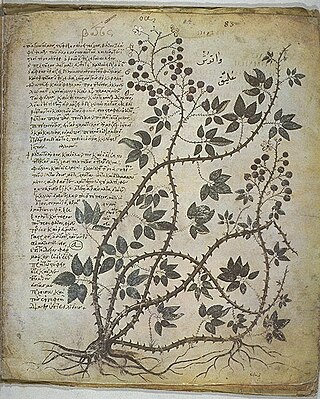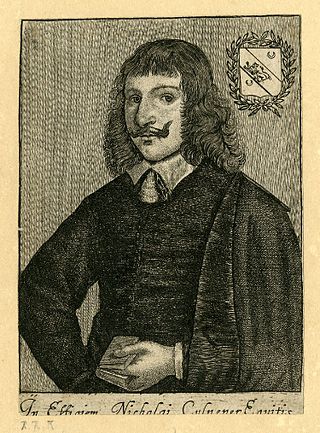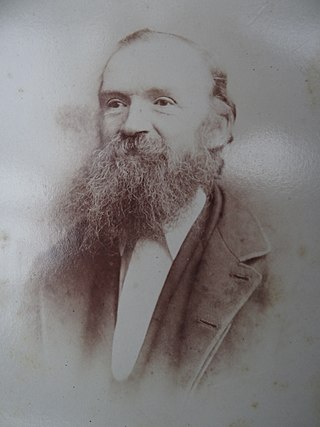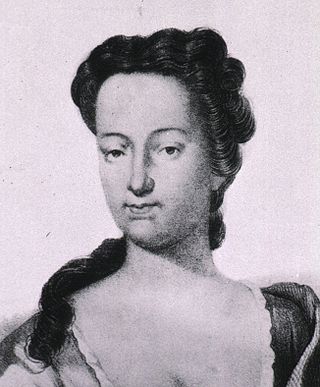This article needs additional citations for verification .(December 2009) |
| Indiana Botanic Gardens | |
|---|---|
 | |
| Location | Hammond, Indiana |
The Indiana Botanic Gardens is the largest and oldest retailer of herbs in the United States. [1]
This article needs additional citations for verification .(December 2009) |
| Indiana Botanic Gardens | |
|---|---|
 | |
| Location | Hammond, Indiana |
The Indiana Botanic Gardens is the largest and oldest retailer of herbs in the United States. [1]
Born in Wisconsin in 1878, Joseph E. Meyer acquired a curiosity about plants and nature at a young age. His father, who was a photographer, often took Meyer out on assignments into forests and fields. From here, he learned a great deal about various aspects of nature. Complications in Meyer's family and financial life caused him to temporarily step aside from nature and take up a career in printing. Meyer soon found himself in Chicago working for a large printer. Not long after, a strike shut down the printer and Meyer began working for The Hammond Times.
After settling in Hammond, Meyer desired to have a business of his own, preferably something in the printing industry. Giving consideration to his set of skills, Meyer realized that he knew a great deal about printing and even more about nature. A company that sold herbs through a catalogue would be a profitable endeavor thanks to his possession of an old printing press and vast knowledge of natural remedies. It was with the blending of these two passions that gave birth to Indiana Botanic Gardens.
Indiana Botanic Gardens is a privately owned, family-run business that operates within the vitamin and herbal supplement industry. The Indiana Botanic Gardens have had a history in the Northwest Indiana region for nearly 100 years. Its history can be read about in botanical and herbal publications, as well as literature pertaining to the history of the Calumet Region. The Indiana Botanic Gardens were founded in 1910 by horticulturalist and herbalist Joseph Meyer (1878–1950) in a small cottage in the rear of his home in Hammond, Indiana.
Initially called the Indiana Herb Gardens, the business barely covered living expenses for the large Meyer family, which eventually consisted of seven sons and one daughter. Joseph Meyer's elder sons helped their father to grow the business by gathering herbs from the nearby fields. The family packed boxes, filled orders, fed the printing press, and folded circulars during the day. The daily workload for the Meyer's often bled into their evenings where they put catalogs together by binding them with needles and thread.
Once the company began to sustain itself, it moved from Meyer's cottage to a larger building off of Calumet Avenue in Hammond, Indiana. Due in part to his roots as a printer, Joseph E. Meyer published a 400-page book in 1918 entitled, The Herbalist. Seven years later, The Herbalist Almanac, an annual publication, was produced in 1925. The Herbalist Almanac was a booklet contains listings of the herbs and roots that the company sold, recipes, Indian weather forecasts, treatments for common ailments, popular songs of the day, and advice on farming issues. In 1979, after fifty-four years of publication, The Herbalist Almanac was retired. Vintage copies of The Herbalist Almanac are still around, some dating back to the 1950s, and can be purchased online through book shops and eBay. There are many collectors and agricultural, botanical, and gardening enthusiasts that have copies. Colleges and universities still study and use the almanack for educational purposes in many horticulture classes. The University of Florida also contributed to the preservation effort and has a number of the almanacks ranging from 1929 to 1971 in their rare book collection. A copy of The Herbalist can be found in the Smithsonian Institution Library.
Later, in 1925, Meyer purchased a wild tract of land on the Little Calumet River. The land held a profusion of medicinal plants, shrubbery, and virgin forest. One year later, in 1926, this fertile ground would become home to the newly named Indiana Botanic Gardens. The offices and warehouse were now housed in a 36,000-square-foot (3,300 m2) English gabled building. The grounds and gardens covered 10 acres (40,000 m2) and were filled with beautiful landscaping and architecture. The property also featured a mill where all of the botanicals were manufactured.
The mansion still stands today under Meyer Family ownership and is used seasonally by Hluska Enterprises Inc, as a tenant. During the summer, it is a retail fireworks outlet (Good Times Fireworks) and in the fall it is the site of the famous Reaper's Realm Haunted House. As of December 2023, this English (Tudor) style gabled mansion is in danger of demolition, as the City of Hammond has recently expanded their Hammond Gateways Redevelopment Allocation Area to include this and adjacent sites. This will depend upon the ability for future private developer proposals to either rehabilitate and reuse the building or to raze it.
During the next few years, Meyer travelled to all parts of North America to gather material and information on native plants and their uses. He received mail on an international scale from universities, libraries, botanists, and people from all ranks of life. In 1932, he travelled to Europe to seek rare herbals. In Joseph Meyer's time, self-treatment with herbs was commonly practiced and often necessary due to economic conditions or the scarcity of professional medical help. Meyer devoted his life to providing herbs to people, and many grateful customers sent letters and recipes extolling the benefits. The Old Herb Doctor was compiled from this information to let other customers know how other customers had used herbs and the good results they had obtained from them.
The business has been handed down from generation to generation on to his grandson David Meyer, who is still part of the organization, along with great-grandson Tim Cleland, current president of the company. In 1990, the company moved into a more modern facility in nearby Hobart, Indiana. Although no longer a grower of herbs, Indiana Botanic Gardens sells vitamins, essential oils, teas, beauty care products, and other nutritional supplements in addition to being a distributor of bulk herbals. The Hobart location has a retail store that contains the majority of the Botanic Choice line and also sells wholesale products. The bulk of the business continues to be derived from mail order catalogue sales. However, with the re-launch of their website in May 2008, the Indiana Botanic Gardens have been focusing on expanding their online operations.

Hammond is a city in Lake County, Indiana, United States. It is part of the Chicago metropolitan area, and the only city in Indiana to border Chicago. First settled in the mid-19th century, it is one of the oldest cities of northern Lake County. As of the 2020 United States census, it is also the largest in population. The 2020 population was 77,879, replacing Gary as the most populous city in Lake County. From north to south, Hammond runs from Lake Michigan down to the Little Calumet River; from east to west along its southern border, it runs from the Illinois state line to Cline Avenue. The city is traversed by numerous railroads and expressways, including the South Shore Line, Borman Expressway, and Indiana Toll Road. Notable local landmarks include the parkland around Wolf Lake and the Horseshoe Hammond riverboat casino. Part of the Rust Belt, Hammond has been industrial almost from its inception, but is also home to a Purdue University campus and numerous historic districts that showcase the residential and commercial architecture of the early 20th century.

Materia medica is a Latin term from the history of pharmacy for the body of collected knowledge about the therapeutic properties of any substance used for healing. The term derives from the title of a work by the Ancient Greek physician Pedanius Dioscorides in the 1st century AD, De materia medica, 'On medical material'.

Herbal medicine is the study of pharmacognosy and the use of medicinal plants, which are a basis of traditional medicine. With worldwide research into pharmacology, some herbal medicines have been translated into modern remedies, such as the anti-malarial group of drugs called artemisinin isolated from Artemisia annua, a herb that was known in Chinese medicine to treat fever. There is limited scientific evidence for the safety and efficacy of many plants used in 21st-century herbalism, which generally does not provide standards for purity or dosage. The scope of herbal medicine sometimes include fungal and bee products, as well as minerals, shells and certain animal parts.

John Gerard was an English herbalist with a large garden in Holborn, now part of London. His 1,484-page illustrated Herball, or Generall Historie of Plantes, first published in 1597, became a popular gardening and herbal book in English in the 17th century. Except for some added plants from his own garden and from North America, Gerard's Herbal is largely a plagiarised English translation of Rembert Dodoens's 1554 herbal, itself highly popular in Dutch, Latin, French and other English translations. Gerard's Herball drawings of plants and the printer's woodcuts are mainly derived from Continental European sources, but there is an original title page with a copperplate engraving by William Rogers. Two decades after Gerard's death, the book was corrected and expanded to about 1,700 pages.

Nicholas Culpeper was an English botanist, herbalist, physician and astrologer. His book The English Physitian is a source of pharmaceutical and herbal lore of the time, and Astrological Judgement of Diseases from the Decumbiture of the Sick (1655) one of the most detailed works on medical astrology in Early Modern Europe. Culpeper catalogued hundreds of outdoor medicinal herbs. He scolded contemporaries for some of the methods they used in herbal medicine: "This not being pleasing, and less profitable to me, I consulted with my two brothers, Dr. Reason and Dr. Experience, and took a voyage to visit my mother Nature, by whose advice, together with the help of Dr. Diligence, I at last obtained my desire; and, being warned by Mr. Honesty, a stranger in our days, to publish it to the world, I have done it."

A herbal is a book containing the names and descriptions of plants, usually with information on their medicinal, tonic, culinary, toxic, hallucinatory, aromatic, or magical powers, and the legends associated with them. A herbal may also classify the plants it describes, may give recipes for herbal extracts, tinctures, or potions, and sometimes include mineral and animal medicaments in addition to those obtained from plants. Herbals were often illustrated to assist plant identification.

John Parkinson was the last of the great English herbalists and one of the first of the great English botanists. He was apothecary to James I and a founding member of the Worshipful Society of Apothecaries in December 1617, and was later Royal Botanist to Charles I. He is known for two monumental works, Paradisi in Sole Paradisus Terrestris, which generally describes the proper cultivation of plants; and Theatrum Botanicum, the most complete and beautifully presented English treatise on plants of its time. One of the most eminent gardeners of his day, he kept a botanical garden at Long Acre in Covent Garden, today close to Trafalgar Square, and maintained close relations with other important English and Continental botanists, herbalists and plantsmen.
Michael Moore was a medicinal herbalist, author of several reference works on botanical medicine, and founder of the Southwest School of Botanical Medicine (SWSBM). One of the areas at Mission Garden in Tucson, Arizona, honors Moore. Before he was an herbalist Michael Moore was a musician and a composer, father and husband. He operated the SWSBM as a residency program for 28 years, first in Albuquerque, New Mexico, and later in Bisbee, Arizona. For decades, Moore influenced, impacted, taught, and reached one way or another more practicing herbalists than any other living herbalist in the United States. His books put the previously unknown materia medica of the southwest into mainstream botanical field.
William LeSassier was an American herbalist and acupuncturist. He developed William’s Triune System of Formulation, which continues to be taught by herbalists, including David Winston, who has significantly expanded LeSassier's materia medica. LeSassier taught and inspired many of the major herbalists currently practicing in the United States, including Matthew Wood, David Winston, Margi Flynt, and Dina Falconi, and his influence is significant. His classes were taped and continue to influence herbal medicine in the United States.

Duncan Scott Napier was a Scottish botanist, herbalist and businessman. Despite having a deprived childhood and being functionally illiterate until his early teens, he became an expert in herbal remedies and did much to establish herbalism as a recognised branch of medicine. The herbalist business that he founded stayed in his family for three generations and still exists today.

Elizabeth Blackwell was a botanical illustrator and author who was best known as both the artist and engraver for the plates of "A Curious Herbal", published between 1737 and 1739. The book illustrated medicinal plants, and was designed as a reference work for the use of physicians and apothecaries.
Joseph Ernest Meyer was a botanist, writer, illustrator, publisher, and supplier of pharmaceutical-grade herbs and roots to the drug trade who became a prominent citizen and eventually a millionaire in Northwest Indiana. He was the founder of the Indiana Botanic Gardens, Calumet National Bank and Meyer Publishing. At his death he was said to be the world's largest distributor of herbs used in salves, cosmetics, and medicines.
James Franklin was an early American printer, publisher and author of newspapers and almanacs in the American colonies. James published the New England Courant, one of the oldest and the first truly independent American newspapers, and the short lived Rhode Island Gazette.
Meyer's Castle or the Joseph Ernest Meyer House is a former private residence in the town of Dyer, Indiana in the United States. The castle was constructed from 1927 to 1931 in the Jacobethan style by architect Cosbey Bernard, Sr. The house was built for Joseph Ernest Meyer as his private residence, a herbologist and one of Hammond's first millionaires. The building now serves as a special events venue and is also home to "Rivelli", an Italian steakhouse.

In general use, herbs are a widely distributed and widespread group of plants, excluding vegetables and other plants consumed for macronutrients, with savory or aromatic properties that are used for flavoring and garnishing food, for medicinal purposes, or for fragrances. Culinary use typically distinguishes herbs from spices. Herbs generally refers to the leafy green or flowering parts of a plant, while spices are usually dried and produced from other parts of the plant, including seeds, bark, roots and fruits.
The history of herbalism is closely tied with the history of medicine from prehistoric times up until the development of the germ theory of disease in the 19th century. Modern medicine from the 19th century to today has been based on evidence gathered using the scientific method. Evidence-based use of pharmaceutical drugs, often derived from medicinal plants, has largely replaced herbal treatments in modern health care. However, many people continue to employ various forms of traditional or alternative medicine. These systems often have a significant herbal component. The history of herbalism also overlaps with food history, as many of the herbs and spices historically used by humans to season food yield useful medicinal compounds, and use of spices with antimicrobial activity in cooking is part of an ancient response to the threat of food-borne pathogens.

Frank Newman Turner, NDA, NDD, FNIMH, was a British pioneering organic farmer, writer and broadcaster, who, based on his experience of natural treatment of animals, later became a consulting medical herbalist and naturopath. His books Fertility Farming, Fertility Pastures, and Herdsmanship are regarded as classics of practical organic husbandry.

The Grete Herball is an Early Modern encyclopedia and the first illustrated herbal produced in English. It is preceded by Richard Banckes's unillustrated Herball (1525), which was the first printed English herbal ever produced. The Grete Herball is a single volume compendium which details the medicinal properties of plants and some non-botanical items according to the system of humoralism. Confirmed editions were printed between 1526 and 1561, with many still in existence today. Its full title is "The grete herball: whiche geueth parfyt knowlege and under standyng of all maner of herbes & there gracyous vertues whiche god hath ordeyned for our prosperous welfare and helth: for they hele & cure all maner of dyseases and sekenesses that fall or mysfortune to all maner of creatoures of god created: practysed by many expert and wyse maysters, as Aucienna & other &c."

Purdue University Northwest (PNW) is a public university with two campuses in Northwest Indiana, one in Hammond, and another in Westville. It is part of the Purdue University system and offers more than 70 undergraduate and graduate degree programs to approximately 6,200 students with more than 64,000 alumni.

The Organic Herb Trading Company is a supplier of organic herbs and spices. It was founded by Mike Brook in 1982 in a small village called Hambleden near Henley-on-Thames. Over the last 30 years, the company has grown and sourced the UK's largest range of ingredients for a diverse range of customers in the herbal tea, food, health, and beauty markets. Their customers are based both in the UK and worldwide and include brands such as Pukka Herbs, Neal's Yard Remedies, and River ford.